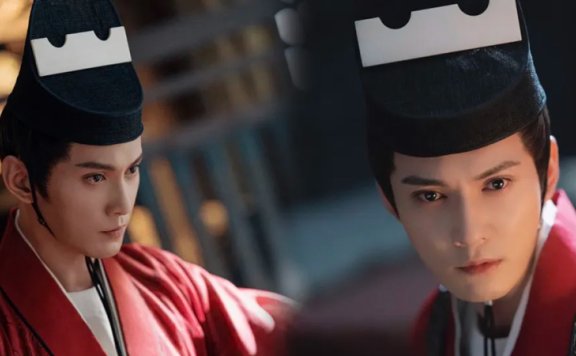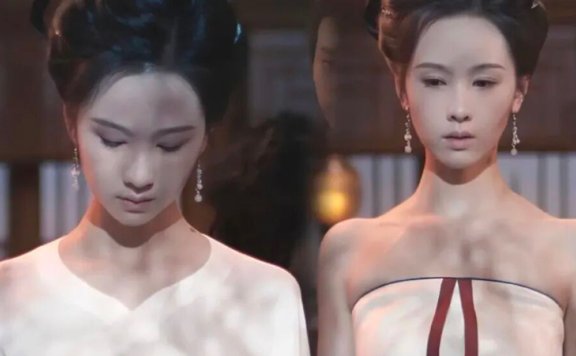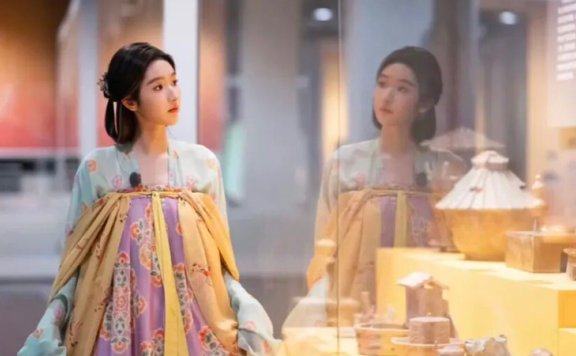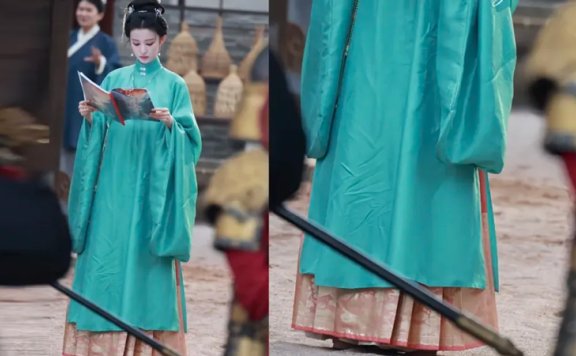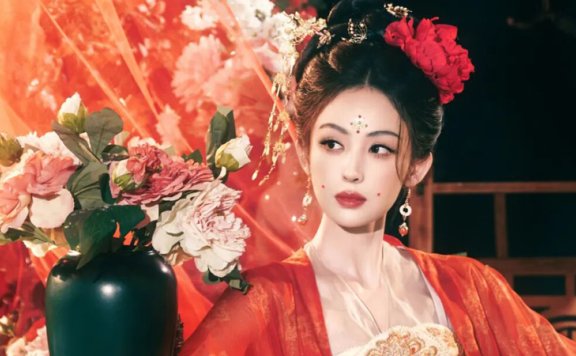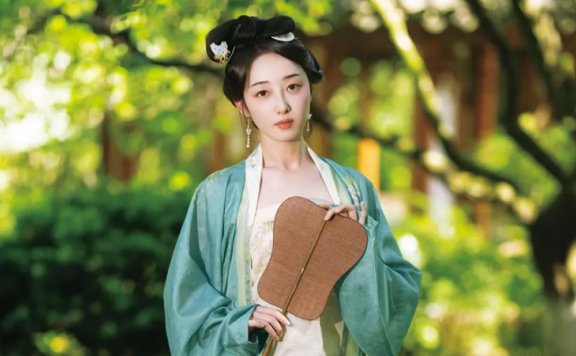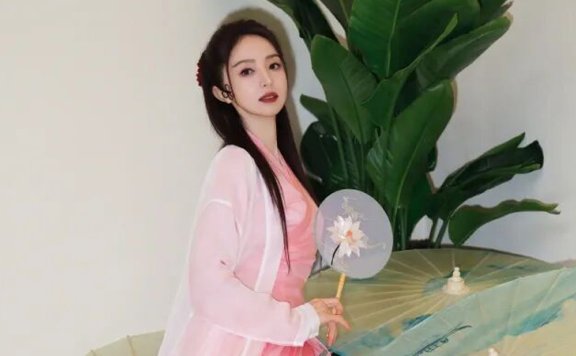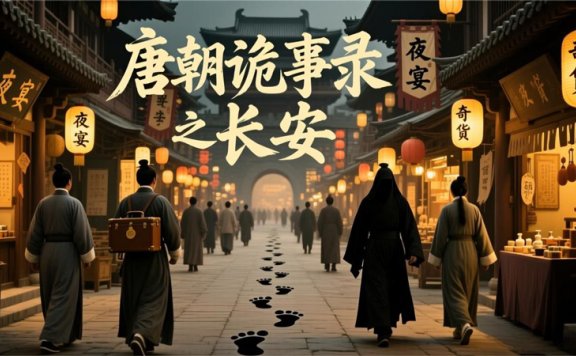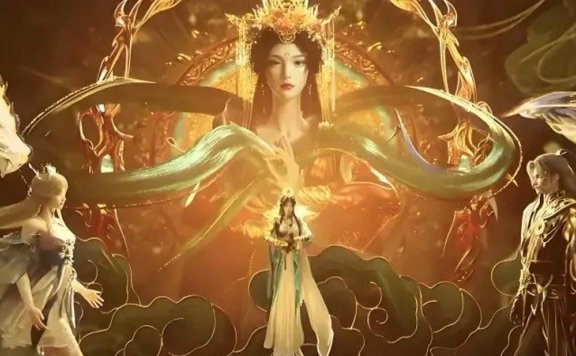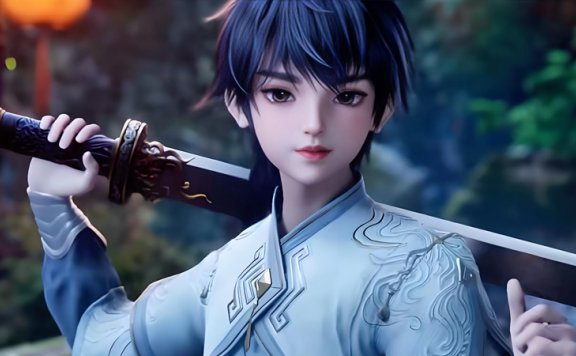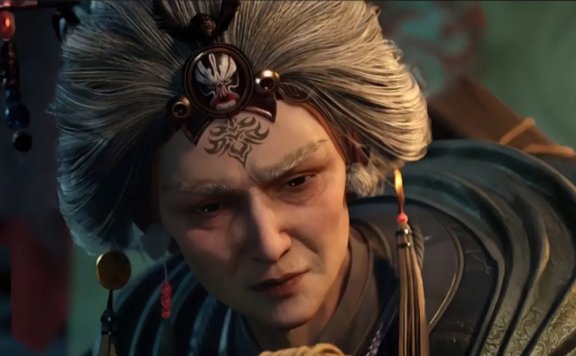Article
搜索结果:
-
Passionate Sagas & Anguish-Satisfaction: The Emotional Pull Shaping Chinese TV
Television audiences are gravitating toward narratives where deep affection clashes with sharp conflict. A phrase like Passionate Sagas now peppers online forums, summing up this pull toward stories where bonds are tested by fierce emotions. In The Prisoner of Beauty (折腰), leads display warmth while hiding private agendas. Love & Crown (凤凰台上) shows he and she divided by a mentor's death yet drawn together. Even cinema captures this, as in The Sun Rises on Us All (日掛中天), where a street-side glance between Zeng Meiyun (曾美云) and Bao Shu (葆树) speaks volumes. This pattern, often called Anguish-Satisfaction, weaves mild anguish into rich emotional payoffs. Creators are noting how viewers embrace these layered tensions, shaping new projects to feed this appetite. 1. Love and Hate in Modern Drama In today's television landscape, a distinct narrative pattern captivates audiences by weaving together deep-seated conflict and passionate romance. This approach, often seen in series where characters grapple with opposing loyalties or historical grievances, draws viewers into a whirlwind of feelings. Stories that pit love against hatred or duty against desire have become a staple, offering a mix of heartache and hope. They tap into universal emotions, making the journey of characters who cannot easily… -
Xu Zhengxi's Hat in Yong'an Dream Look So Unusual?
An online discussion has erupted around the distinctive headwear worn by actor Xu Zhengxi (徐正溪) in the historical drama Yong'an Dream (永安梦). Instead of the typical ornate crowns, his character sports a cap with what appear to be two small, curious eyes peeking out from the top. This unique design has captivated viewers, with many joking that only he could carry off such a peculiar look. The answer to this sartorial mystery lies not in a costume designer's whim, but deep within the fashion history of ancient China. This headpiece is a gateway to understanding the practicalities and social codes of attire during a dynamic period in Chinese history. The Hat's True Identity The cap is known as a Pingjin Ze (平巾帻). A Ze was a type of informal cap worn under more formal headpieces, and its use dates back to the Han Dynasty. It became particularly popular from the Wei and Jin periods through the Sui and Tang dynasties, frequently worn by military officials. The two horizontal protrusions that resemble eyes are not decorative. They are the ends of a horizontal hairpin called a Zan Dao (簪导), which was used to secure the cap firmly to the wearer's hair.… -
Unveiling Practical Functions of Zhongyi in Ancient China
Have you ever noticed how characters in historical dramas often retire for the night dressed in pristine white garments, and wondered if they ever worry about stains? This common visual isn't a costume designer's oversight or a symbol for something else; it is a deliberate and historically accurate representation of a fundamental layer of traditional attire known as Zhongyi (中衣). Far from being simple sleepwear, this undergarment served as the versatile core of ancient Chinese dress, functioning as both a formal inner layer and comfortable loungewear. Its enduring presence on screen hints at a sophisticated sartorial system where every piece, even the hidden ones, played a crucial role in aesthetics, etiquette, and personal comfort. Historical Roots The concept of Zhongyi is deeply embedded in classical texts. Its name, literally meaning "middle clothing," originates from the ancient glossary Shi Ming (释名), which describes its position between the innermost undergarments, or Xieyi (亵衣), and the outer robes. This placement was not merely practical but symbolic, representing a structured approach to dressing that prioritized propriety. In the hierarchical system of traditional dress, the Zhongyi was the essential buffer, a layer of modesty and refinement that separated the private self from the public presentation.… -
Snow Empress's Bold Stand: How She Challenges the Beast God in Douluo Dalu
In the latest twists of Soul Land 2: The Peerless Tang Clan (斗罗大陆 ‖ 绝世唐门), a stunning transformation unfolds as Snow Empress awakens to her true self. After absorbing the profound energy from the ancient ice marrow, she sheds her youthful form, emerging as a powerful adult with memories of her reign over the Extreme North fully restored. This rebirth sparks a daring confrontation, where she openly warns Beast God Ditian, the mightiest known soul beast. What fuels her audacity to challenge such a formidable force, and where does her confidence stem from? This article delves into the depths of their powers, examining the origins of their strength and the factors that could tip the scales in an epic clash. Cultivation and Power Beast God Ditian boasts an impressive 890,000 years of cultivation, placing him on the brink of divinity as a near-god entity. His mastery of dual soul cores allows him to compress soul force to its limits, granting unmatched explosive power and endurance in battles. This advanced state makes him a towering figure among soul beasts, with abilities that dwarf many rivals. However, Snow Empress is no ordinary opponent. Her 700,000 years of cultivation come from a pure,… -
Reimagining Hanfu Through Wang Yuwen’s Viral Moment
When Wang Yuwen (王玉雯) stepped into a museum wearing a flowing Hanfu outfit on the variety show Wow the World (地球超新鲜), she did more than just turn heads—she sparked a conversation about how traditional clothing could weave itself into the fabric of modern life. Viewers flooded social media with praise, noting how natural and approachable she looked, as if this centuries-old style had never left everyday wardrobes. Her choice wasn't a costume for a period drama but a thoughtful nod to the past, blending history with contemporary ease. This moment highlights a growing curiosity about Tang Dynasty fashion and its potential revival, inviting us to imagine a world where such garments are as common as jeans and t-shirts. What made her appearance so relatable, and why does it matter today? The answers lie in the details of the attire, the craftsmanship behind it, and the cultural threads that connect then and now. The Tang Style Wang's ensemble featured a Qixiong (齐胸) style, where the skirt is tied high above the chest, a design popular during the peak of the Tang era. Unlike the elaborate updos often seen in historical depictions, she paired it with a simple, everyday hairdo, making the look… -
Love & Crown: Hidden Identities in Imperial Turmoil
This season brings Love & Crown (凤凰台上), a series that intertwines political schemes with martial arts elements. It follows two formidable figures whose paths cross in a realm of power struggles and emotional turmoil. Their relationship evolves against a backdrop of imperial conflicts, where personal desires clash with public duties. Ren Jialun (任嘉伦) portrays a character skilled in strategy and combat, while Peng Xiaoran (彭小苒) embodies a resilient individual with her own ambitions. Together, they navigate a narrative filled with twists, supported by a visual feast of costumes and sets. The story draws from the novel My Empress (我的皇后), adding depth to its character-driven plot. Audience excitement is evident through high engagement on platforms like Youku (优酷), where it trends prominently. Discussions often highlight the leads' past roles in projects such as One and Only (周生如故) and Goodbye My Princess (东宫), fueling expectations for their dynamic here. Its release on Jiangsu Satellite TV (江苏卫视) alongside digital streaming aims to reach a broad viewership. What sets this production apart is its focus on authentic character interactions rather than relying on exaggerated tropes. Viewers can anticipate a gripping tale that balances action with heartfelt moments, making it a standout addition to the… -
Xin Yunlai's Controversial Hat in The Ming Dynasty Youth
When Xin Yunlai (辛云来) appeared in behind-the-scenes photos for the new historical drama The Ming Dynasty Youth (明月录), set in Ming Dynasty China, social media erupted with comments about his costume. Many users claimed his wide-brimmed hat resembled styles from Korean historical dramas, igniting a debate over cultural influences. However, this headwear is actually a traditional Chinese item known as Damao (大帽), commonly worn by scholars and officials during the Ming era. This misconception highlights a broader issue where media portrayals can blur historical origins, leading audiences to misattribute cultural elements. As historical shows gain global popularity, understanding the authentic roots of such attire becomes crucial for preserving heritage and fostering accurate cultural appreciation. The drama, starring Xin Yunlai and Wang Churan (王楚然) in their first Ming-era collaboration, serves as a reminder that entertainment can shape perceptions, making it vital to delve into the facts behind the fashion. Hat Origins The Damao featured in The Ming Dynasty Youth is characterized by its broad, straight brim and varied shapes, from tall to short, and round to nearly square. Crafted from materials like bamboo, palm leaves, or felt, it was designed for practicality, offering protection from sun and wind during outdoor activities.… -
Wang Churan’s Floor-Grazing Top in The Ming Dynasty Youth
In the popular period drama The Ming Dynasty Youth (明月录), actress Wang Churan (王楚然) wears a long, flowing top that extends to her ankles, nearly obscuring the skirt beneath. This styling choice has sparked online debates about historical accuracy and fashion sense. Viewers question whether such lengthy garments were common in ancient times and if they diminish the visual appeal of traditional attire like the horse-face skirt. The discussion highlights a broader curiosity about how historical clothing influences contemporary costume design in television. This article explores the origins and significance of these elongated tops, tracing their roots to the late Ming Dynasty and examining their modern reinterpretations. Historical Roots During the late Ming period, particularly after the mid-Jiajing (嘉靖) era, women's fashion saw a shift toward longer, more subdued garments. Historical records, such as those by scholar Yang Shen (杨慎) in his work Sheng'an Waiji (升庵外集), note that women's tops resembled men's attire in length, often hanging just above the ground. This style emphasized a slender, effortless silhouette, with sleeves so wide they could span over a meter. The trend reflected societal changes, as economic pressures led to a preference for simplicity over opulence. Garments from this era, like those… -
Why Don't Modern Chinese Men Grow Facial Hair?
In ancient China, a luxuriant beard was the ultimate symbol of masculine maturity and charm. Historical portraits and literary classics are filled with descriptions of venerable men distinguished by their impressive facial hair. Yet in contemporary China, from the bustling streets of Shanghai to the screens of popular television dramas, the bearded face has all but disappeared. This shift raises a compelling question about the evolution of male aesthetics. Why has a feature once so central to a man's identity fallen so dramatically out of favor? The answer lies at the intersection of changing beauty standards, media influence, and a fundamental redefinition of what constitutes male attractiveness today. Historical Significance For centuries, facial hair was far more than a simple biological trait; it was a powerful social signifier. In the hierarchy of classical aesthetics, a fine beard indicated wisdom, virility, and social standing. Historical texts and paintings consistently depict revered figures, from scholars to generals, adorned with beards. The legendary warrior Guan Yu (关羽), a central character in the Romance of the Three Kingdoms (三国演义), is famously remembered as the "Gentleman with the Beautiful Beard." His long, flowing beard was an integral part of his formidable and honorable image, a… -
The Quiet Power of Zhang Ruonan’s Green Warring States Robe
In the ever-evolving landscape of fashion and media, a striking trend has emerged from the depths of history, capturing imaginations and challenging long-held stereotypes. Zhang Ruonan (章若楠), a prominent figure in the entertainment industry, recently donned a vibrant green Warring States robe in a photoshoot that has sparked widespread discussion. This attire, rooted in ancient Chinese history, is not just a garment but a narrative tool that blends elegance with resilience. Traditionally, the concept of a "big female lead" in stories and style has been associated with bold, assertive visuals, often dismissing softer aesthetics as weak or insignificant. However, Zhang Ruonan's portrayal in this robe defies such narrow definitions, illustrating how gentleness can coexist with unwavering determination. Her appearance, set against natural backdrops like lush grasslands and wooded areas, evokes a sense of timeless beauty, as if she's a character from a historical epic, poised between vulnerability and strength. This photoshoot does more than showcase fashion; it invites viewers to reconsider what it means to be powerful, suggesting that true strength often lies in subtlety and grace. As we delve into this phenomenon, it becomes clear that the Warring States robe is more than a trend—it's a symbol of a… -
Tang Dynasty Hanfu: How Celebrities and Flattering Styles Win Hearts
In today's fashion landscape, traditional attire from China's Tang Dynasty is experiencing a vibrant resurgence. This era, celebrated for its cultural prosperity and artistic innovation, has left a lasting legacy in clothing that emphasizes grace and adaptability. Hanfu styles from this period, with their flowing silhouettes and intricate details, are being rediscovered by a new generation. What makes them particularly appealing is their ability to flatter diverse body types and facial features, moving beyond rigid beauty standards. From curvy figures exuding opulence to slender frames radiating elegance, Tang Hanfu offers a versatile canvas for self-expression. Recent television series and celebrity endorsements have amplified this trend, making it more accessible and inspiring people to embrace their unique beauty through historical fashion. Flattering Designs The Qixiong Ruqun (齐胸襦裙) stands out as a quintessential Tang Dynasty garment, known for its high-waisted cut that rests above the bust. This design creates a universally flattering shape by avoiding tight fits and instead using soft, draping fabrics that flow with the body. For those with curvier builds, the loose structure and billowing sleeves help smooth lines and convey a sense of dignified luxury. Slimmer individuals find that the lightweight materials enhance their natural grace, adding an… -
Rabbit Ear Hairstyle in Tang Dynasty Ⅲ
In the popular series Strange Tales of Tang Dynasty Ⅲ: Chang'an (唐朝诡事录之长安), the character Xi Jun (喜君) captivates audiences with her charming hairstyle that resembles rabbit ears. This look has sparked curiosity and admiration online, with many viewers wondering about its name and origins. Far from being a modern invention, this hairstyle has deep roots in Tang Dynasty fashion, where it symbolized youth and vitality. It frequently appears in historical dramas, often paired with traditional attire like Qixiong Shanqun (齐胸衫裙), enhancing the playful and innocent aura of female characters. This article delves into the history, variations, and enduring appeal of this distinctive style, revealing how ancient beauty standards continue to influence today's media. Ancient Origins The rabbit ear hairstyle is broadly categorized as Shuangji (双髻), meaning "double bun." This style was especially popular during the early to high Tang period, characterized by two buns positioned on the head, sometimes with a central gap or crossed sections. Historical records, such as those from the Five Dynasties period, note its prevalence among young women, reflecting societal norms where hairstyles indicated age and marital status. For instance, unmarried girls often wore Shuangji to showcase their youth, while mature women opted for more elaborate… -
How a Historical Attire Becomes Modern Style
In recent years, the traditional attire of the Song Dynasty, referred to as Hanfu, has captured the attention of fashion enthusiasts worldwide. This style, distinct from the lavish Tang or stately Ming designs, emphasizes understated grace and simplicity. Its flowing silhouettes and muted palettes evoke a sense of calm, making it a favorite for those seeking a break from today's fast-paced trends. As more people explore this historical fashion, it highlights a growing appreciation for attire that blends artistry with everyday wear, offering a fresh perspective on personal expression through clothing. Historical Roots The origins of Song Dynasty Hanfu trace back to a period in Chinese history marked by cultural refinement and scholarly pursuits. During this era, clothing was designed to reflect values like modesty and intellect, with garments often featuring layered pieces such as the Beizi (褙子), a long outer robe, and subtle embroidery. This approach contrasted with earlier dynasties, focusing on lightweight fabrics and clean lines that enhanced natural movement. Over time, these elements have been preserved in modern interpretations, showcasing how historical context shapes contemporary fashion choices. Key components like the inner garment, often a simple top, and skirts with pleats, contributed to an overall aesthetic of… -
46-Year-Old Dong Xuan Stuns in Pink Hanfu
When photos of Dong Xuan (董璇), a 46-year-old actress, surfaced online in a stunning pink Hanfu ensemble, they instantly captivated audiences. The images, set against a backdrop reminiscent of Jiangnan's scenic beauty, showcase her in a flowing, gauzy dress that seems to dance with the breeze. This isn't just another celebrity photoshoot; it's a vivid portrayal of classical elegance meeting modern grace. Her choice of a round fan adorned with lotus motifs and traditional embroidered shoes completes the look, making it a topic of widespread admiration. At an age where many might shy away from bold fashion statements, Dong Xuan demonstrates how timeless style transcends generations. The response has been overwhelming, with fans and fashion enthusiasts alike praising her ability to embody the spirit of traditional Chinese aesthetics so effortlessly. This moment highlights a growing appreciation for cultural elements in contemporary media, and Dong Xuan's presentation serves as a perfect entry point into this discussion. The Ensemble The pink gradient Hanfu worn by Dong Xuan features layers of sheer silk that create a soft, ethereal effect. Its design includes delicate sleeves that flutter gently, evoking the tranquil atmosphere of a water town in southern China. The color transitions from light… -
How Tang Dynasty Tales Resonate with Modern Audiences
In the final months of 2025, a television phenomenon has seized the attention of audiences, proving that substance can triumph over spectacle. Strange Tales of Tang Dynasty Ⅲ: Chang'an (唐朝诡事录之长安), the third installment of a beloved series, achieved staggering platform ratings and critical acclaim mere days after its premiere. This period mystery drama, devoid of A-list celebrities and pre-existing blockbuster IPs, has managed to not only meet but exceed the high expectations set by its predecessors. Its success is not a happy accident but the result of a meticulous and thoughtful creative philosophy that has resonated deeply with viewers. The Foundation The bedrock of the series' appeal is its unwavering respect for the audience's intellect. Rejecting convoluted plots that rely on character ignorance, the narrative presents mysteries that are complex yet logically sound. The story returns to the vibrant, bustling capital of the Tang Dynasty, Chang'an, in its early prosperous years. The protagonists, General Lu Lingfeng (卢凌风) and his partner Su Wuming (苏无名), a disciple of the famous Judge Di, lead their investigative team through a maze of bizarre cases set against a backdrop of intense court rivalries between the Emperor and the Princess. Craftsmanship A tangible, almost obsessive dedication… -
How Costumes in Love & Crown Whisper the Plot
In the realm of historical television, where stories of love and power often blend into a familiar tapestry, Love & Crown (凤凰台上) distinguishes itself through an unexpected narrator: its costumes. Beyond the compelling performances of Ren Jialun (任嘉伦) and Peng Xiaoran (彭小苒), the series has captivated audiences with its sartorial eloquence. Each robe, crown, and accessory is imbued with meaning, silently charting character arcs and emotional undercurrents. This attention to detail transforms clothing from mere backdrop to active participant in the storytelling, inviting viewers to look closer and discover a hidden language stitched into every fiber. Imperial Robes Emperor Xiao Huan's (萧焕) wardrobe serves as a visual diary of his burdens. His dragon robes defy traditional bright yellows, opting instead for subdued hues like pale gray and charcoal. Upon closer inspection, these garments reveal a secret: intricate mountain and river patterns embroidered with thread matching the base color, visible only under specific lighting. This design mirrors his life sentence to the throne, where the weight of the nation is a constant, invisible pressure. When he ascends the dais in court scenes, the faint outlines of these landscapes seem to cling to him, a ghostly map of his responsibilities. The evolution… -
Why Is Gulnazar's Qipao Reviving 1920s Shanghai Glamour?
When Gulnazar appeared in a champagne-colored Qipao, social media buzzed with admiration. Her recent photoshoot channels the elegance of Republican-era China, blending vintage aesthetics with modern sensibilities. The ensemble features delicate embroidery and a high slit, creating a silhouette that is both timeless and contemporary. This look has sparked conversations about fashion nostalgia and how historical styles influence today's trends. It is not merely about clothing but about storytelling through fabric and design. In an age of fast fashion, such attention to detail stands out. This moment captures a wider movement where traditional attire finds new life. The response shows how visual elements can evoke emotion and connect generations. Through this outfit, she invites viewers to explore a rich historical tapestry. Fashion Details The Qipao worn by Gulnazar showcases intricate craftsmanship. Made from silk, it includes bird and flower motifs stitched with precision. The high slit design allows for movement while emphasizing grace. This choice reflects a balance between modesty and boldness. Designers often use such elements to highlight natural body lines. The color palette remains subtle, enhancing the wearer's presence without overpowering. Accessories like a handheld fan and classic updos complete the vision. Each piece works in harmony to… -
The Game-Changing Episode of Eclipse of Illusion
A surge of emotion swept through the fan community following the latest episode of the original animated series Eclipse of Illusion (云深不知梦). In a stunning narrative turn, Shuyu (淑玉), the one true dragon of the Mu Ling Continent (沐灵大陆), made the ultimate choice: self-sacrifice to save her sister. This moment was not just a plot point but a powerful demonstration of the series' growing ambition. Since its premiere on Youku in July 2025, this production from Ian Animation has captivated a dedicated following. It masterfully blends a distinctive Xin Guofeng (新国风) aesthetic, a compelling female-centric narrative, and cinematic storyboarding to create a unique viewing experience. The series has consistently impressed with its visual direction, but this newest chapter elevated its artistry to a new level. While perhaps not every single frame could serve as a desktop wallpaper, the episode's visual intensity was undeniable. The central battle sequence, where the usually gentle Long Er (龙儿), spear in hand, awakened her true power as the War Dragon Sovereign to face two formidable foes, was a spectacle of breathtaking scale. The imagery of nine ethereal dragons coiling around a figure with flowing, unbound hair has already been hailed by many as one of… -
The Demon Hunter: Can Brushstrokes Defend Cang Yuan Jie?
In a landscape where fantasy tales often rely on flashy special effects and predictable power-ups, The Demon Hunter (沧元图) emerges as a breath of fresh ink-washed air. This series, originating from the mind of author I Eat Tomatoes, reimagines the Xianxia genre by weaving traditional Chinese painting directly into its core mechanics. Instead of chanting spells or wielding swords, the protagonist harnesses the power of brushstrokes, turning artistry into combat and creativity into cultivation. The narrative unfolds in the troubled land of Cang Yuan Jie (沧元界), a realm besieged by demons and internal strife, where a young man's journey from vengeance to guardianship challenges every convention. Through its novel approach, the story invites audiences into a world where every battle is a masterpiece in motion, and every character carries a depth that transcends typical hero archetypes. This unique fusion has not only captivated readers of the original web novel but also sparked a visual revolution in its animated adaptation, proving that some stories are better told with a brush than a blade. Brush as Weapon At the heart of The Demon Hunter lies a groundbreaking concept: the integration of Shuimo (水墨) painting into the cultivation system. Meng Chuan (孟川), the… -
4 Unforgettable Physical Shifts in Top Chinese Animation Female Roles
In the vibrant world of Chinese animation, female characters often undergo breathtaking physical changes that captivate audiences. These transformations are not merely visual tricks; they weave deep narratives about identity, sacrifice, and empowerment. From elderly figures shedding years to reveal youthful vigor, to children maturing into powerful adults, these shifts challenge perceptions and drive stories forward. This article delves into four iconic examples where such metamorphoses redefine characters and plotlines, offering viewers a glimpse into the creative storytelling that sets these series apart. Each change carries emotional weight, turning simple animations into profound explorations of human experience. 1. Tale of Herding God (牧神记) - Si Youyou (司幼幽) In Tale of Herding God (牧神记), Si Youyou lives as a hunched old woman in Canlao Village (残老村), hiding a past filled with turmoil. Once the sacred maiden of Tianmo Jiao (天魔教), she was forced into marriage by its leader, Li Tianxing (厉天行). During their wedding, she struck back, stealing the Dayu Tianmo Jing (大育天魔经) and fleeing to escape persecution. Her disguised life as an elder conceals a fierce spirit and a history of rebellion, making her daily existence a delicate balance between survival and secrecy. Beneath the wrinkled facade lies unparalleled beauty,…

